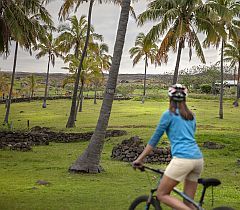The mystery of the Moái: an insight into the extraordinary culture of Rapa Nui
Among the unique cultures of the Polynesian islands, the Rapa Nui culture stands out for its inimitable monolithic statues representing some of the finest human craftsmanship in world history. The heritage, ancestral and archaeological value of these anthropomorphic stone structures stand testament to the richness of culture of the indigenous Rapa Nui people who sculpted them. Embodied in these sculptures is their art, their history and their traditions. In this article, we speak with Britton Shepardson, a prominent archaeologist, author of the book Moái: A New Look at Old Faces and founder of the Terevaka Archaeological Outreach (TAO) organization. Shepardson shares little-known insights into these monoliths and outlines the importance of safeguarding Rapa Nui archeology.
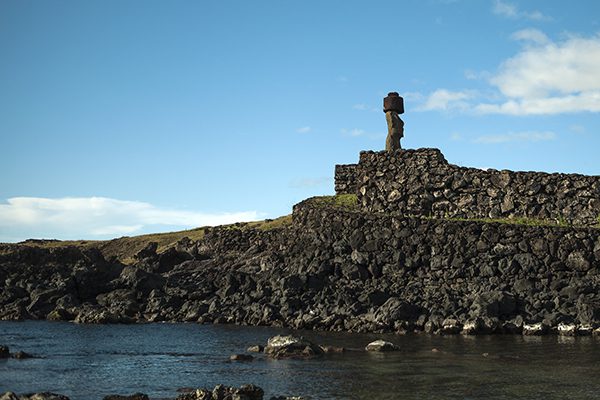
In the middle of the Pacific Ocean, at the eastern end of the Polynesian triangle, is Easter Island (or Rapa Nui as it is known by its people). This 163.6 km2 Chilean islet is a four-hour flight from the country´s mainland and is rich in natural beauty and culture.
The geological history of Rapa Nui is characterized by large volcanic eruptions. The island, it is estimated, originated 3 million years ago. Its first settlers are believed to have arrived from Polynesia more than 800 years ago, resulting in the development of a young, unique and culturally dynamic native people who left an indelible archaeological mark with their moai.
These large stone sculptures have varying features, expressions, sizes and shapes. They are made from varying different types of stone and were erected in diverse locations. In this variety arises certain questions about their construction, cultural significance and indeed how they were transported across the island.
It is no coincidence that the moai are currently and have been, for several centuries, an attraction for sailors, travelers and scientists who have visited the island. They have been documented in ancient travel logs, filmed, photographed and, on many occasions, removed and put on exhibit in different locations around the world. Today this practice is strictly regulated and ultimately the goal is to bring the transplanted moai home.
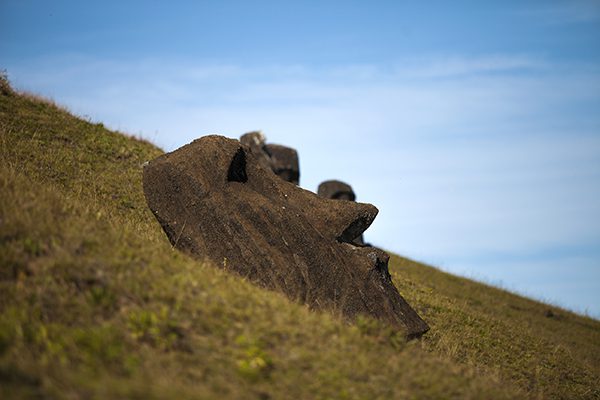
Reading stoney faces
The meaning of the word moai has its origin in the Rapa Nui language. The large stone sculptures are called Moai Aringa Ora, meaning the living face of our ancestors, as explained in an article by the Rapa Nui National Park.
The name, it is thought, perhaps reveals that these giant statues were built in homage to deceased kings to immortalize their spirit. This process captured their energy or “mana” and allowed the deceased leader to continue to protect the island and guarantee fertility and abundance. It is also believed that the moai themselves were an offering to the gods.
The carving of the first moai dates back almost a thousand years, according to the National Library of Chile, but it was not until 1722 that they were first discovered by Europeans. The Dutch explorer and traveler Jacob Roggeveen first witnessed them them in 1722 and, later, they were sketched and documented in the travel writings of the Spaniard Felipe González Haedo in 1770.
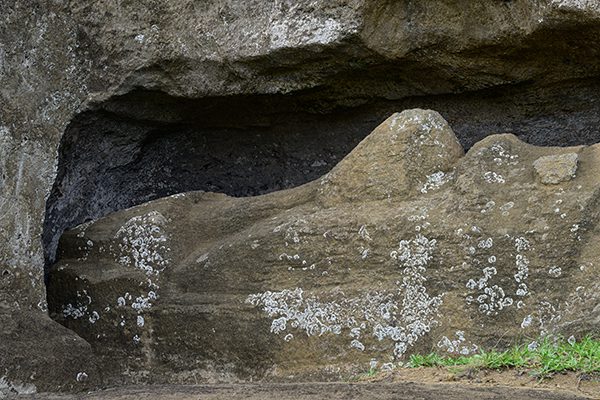
It wasn´t until much later however that these large stone structures were studied and analyzed by professionals in order to better understand the island’s cultural and archaeological heritage. The archaeologist Britton Shepardson was one of these professionals. Shepardson is the founder of the Terevaka Archaeological Outreach (TAO) organization and wrote his doctoral thesis on the moai.
“The more you study the moai, the more they tell you about ancient life on the island. They are the product of artisans and are symbols of teamwork and engineering, as well as knowledge of physics and geology. They also tell us about the political system that existed at the time,” explains Shepardson, who focused his study on understanding the chronology of construction of the respective moai on the island; an audit that was of significant value to the local Rapa Nui people.
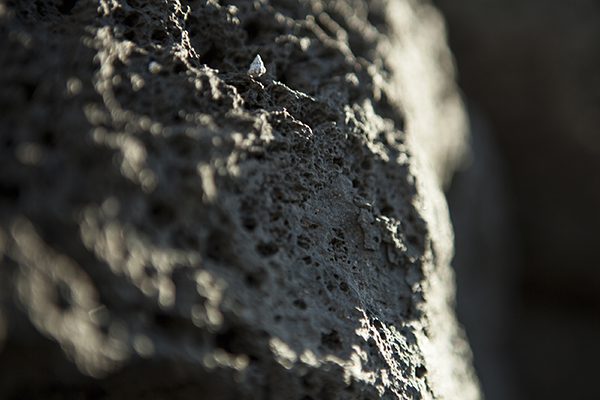
Traits of the Moai
The in-depth study carried out by the archaeologist saw him analyze each moai in detail. No two moai were created alike. Each have different physical features carved in uniquely marked styles: some have a rounder head, others a narrow and elongated body. Some moai have well-preserved fingers. The very material they were sculpted from varies too.
At first glance it seems they were all cut from the same type of stone. The reality is that they were sculpted from four different types of volcanic rock: lapilli tuff, a local grayish-yellow stone only found in the Rano Raraku volcano; basalt, a greenish-black stone; red scoria, a reddish color; and white trachyte, a gray stone.
“I documented 715 moai throughout the island, but I estimate there are probably more than 800 to 900 specimens. The largest concentration remains in the Rano Raraku quarry, with lapilli tuff the stone most commonly used as a building material,” explains Shepardson. In the Rano Raraku quarry, he adds, you can find about 400 sculptures in various stages of construction: buried, unfinished and complete.
In their finished state, these great icons of the Rapa Nui culture can measure up to 14 meters high and weigh almost 10 tons. Each moai was carved as a full length human form from a single piece of rock. One of the most common questions is how they were transported from the place they were carved to the place they were erected on the island, and especially how they were extracted from the Rano Raraku volcano.
Of all the abounding theories, there are two that hold the greatest swathe. The first of which was that they were dragged with ropes until they were deposited in place. Another argues that they were moved by way of wooden log platforms. The method by which the ancient Rapa Nui people mounted the sculptures in their final resting place is understood to have required sophisticated engineering.
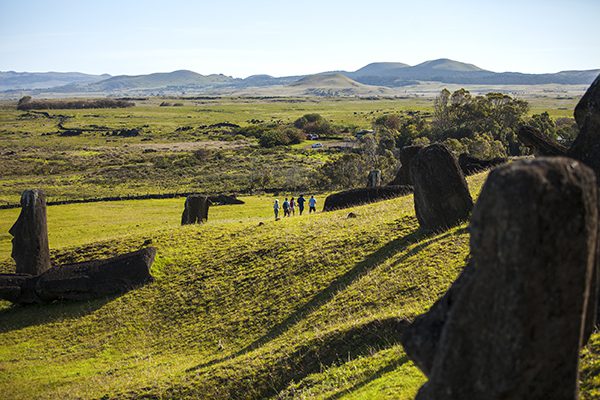
Cultural monoliths
All the moai are of great historical and ancestral value, with strong links to modern Rapa Nui cultural identity. Safeguarding this is paramount to the islanders. The most iconic sites with the most famous moai are the Ahu. Ahu Tongariki, the Ahu Nau Nau, the Ahu Akivi and the Ahu Vai Uri are ceremonial sites or altars with moai statues on top, set in perfect alignment with the sunrise.
Other important moai include the Tukuturi, a kneeling statue; or the moai Hinariru with its tilted neck; or the Ko Kona He Roa moai, with its mysterious carvings of a colonial ship.
The sum of these historical and cultural riches prompted Shepardson to create the Terevaka Archaeological Outreach (TAO) organization in 2003. Its mission is to encourage young Rapanui to take responsibility, initiative and ownership in science, archaeology, heritage, ecology and conservation issues.
“In the island’s history there has always been a divide between the scientific world and local interests,” reflects Shepardson. “I wanted to fill that, creating a bridge between the two, using science and archaeology as a way to encourage local youth to take responsibility and initiative on the island.”

